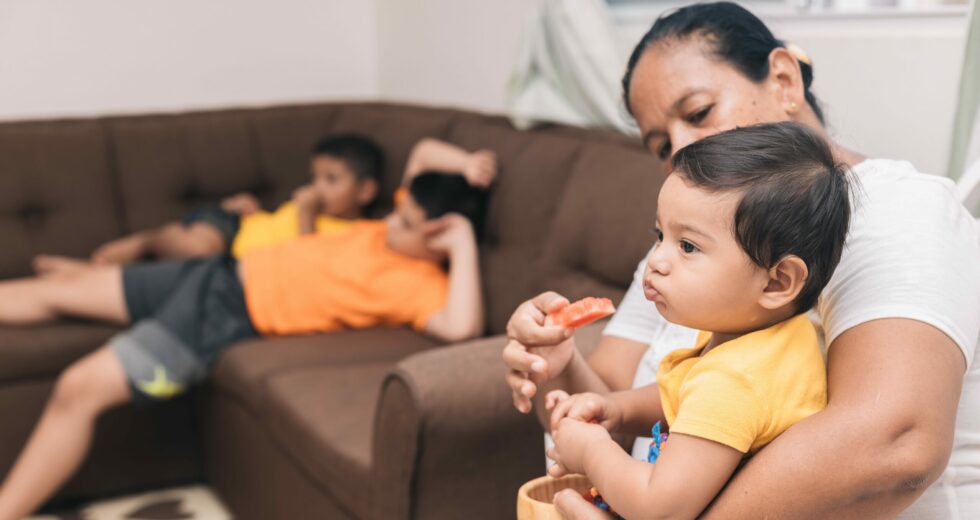In Statewide Survey, New Mexicans Identify Barriers Accessing Vital Services

The 100% New Mexico Initiative is a community-led, data-driven collective impact approach to ensure that all New Mexicans have access to 10 vital services needed to survive and thrive. Supported by the New Mexico legislature since 2019, the model was developed by the Anna, Age Eight Institute at New Mexico State University and operates in 17 of New Mexico’s counties. Local communities are guided by a seven-step process to survey community members, assess results, and target evidence-informed solutions to resolve barriers community members face in accessing vital services. The model was designed to improve the social determinants of health through targeting root causes of inequity in service access. This research brief series describes the baseline results from 6,549 local community members from 11 counties about barriers they face accessing vital services.
What We Did
We analyzed data from the 100% Community Survey at a statewide level to describe community members’ experiences related to need for and access to the 10 vital services for surviving and thriving. Measures of social determinants of health (SDOH) available in the U.S. predominantly include indices of existing community-level metrics such as the number of licensed childcare centers in a community. The 100% Community Survey provides additional insights into service access by engaging the community to assess and design solutions specific to local barriers, while also strengthening relationships between community members and decision makers who can act at a broader scale.
What We Found
High Need for Some Services: Most commonly, participants indicated needing medical care (90%) and dental care (88%). The high level of need for these services was consistently reported across the four public health regions. Approximately half of participants who indicated they are responsible for children reported needing services for young children, including preschool services (53%) and childcare (47%).
Difficulty Accessing Vital Services: Despite nearly universal need for medical care, 41% of those in need reported difficulty accessing medical care. The baseline surveys also revealed that 50% or more of surveyed community members had trouble accessing mental health care, housing assistance, and public transportation. Over 40% reported difficulty accessing youth mentor services, childcare, school-based mental health services, and job training services.
Significant Barriers to Accessing Vital Services: Participants reported numerous barriers accessing services. Common barriers included cost, shortages in availability, services they need but do not qualify for or their insurance doesn’t accept, unfriendly hours, lack of transportation to services, and lack of awareness that services exist.
What It Means
The challenges associated with transforming adverse SDOH into positive SDOH represent an historic opportunity for state and local government to align to prevent cumulative adversity for New Mexicans. This adversity results in costly use of high-end services, often too late to promote health and well-being. Currently, the services that are available throughout New Mexico have many strengths. However, existent barriers prevent some from using the services. In addition, a deficit in one area (such as transportation or childcare) can contribute to lack of access in another (such as medical care or job training). In the report, we offer recommendations to use survey results to drive a unified approach to assessing service needs and barriers across sectors.
Recommended Citation


 Thank you for your interest in Chapin Hall’s research. Please share some information to access this file.
Thank you for your interest in Chapin Hall’s research. Please share some information to access this file.